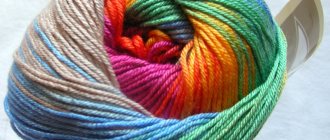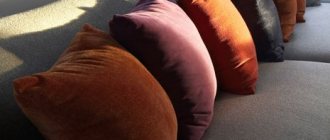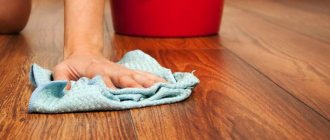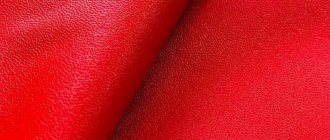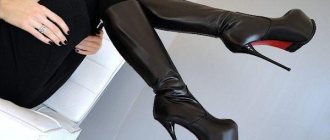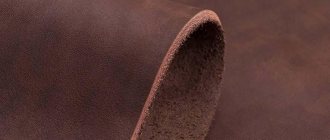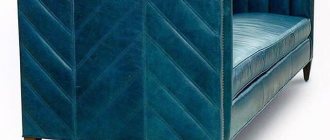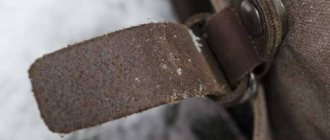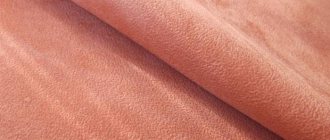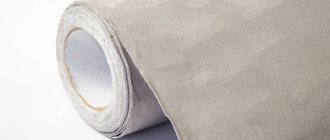Microfiber is a synthetic substitute for natural leather, created on the basis of microfibers. It is very important not to get confused here: artificial and synthetic leather are different concepts. The difference comes from the definitions of these materials. Any artificial material is obtained by physical modification of natural raw materials.
Artificial materials are materials based on substances created by nature. A person does not create them himself, but only “packs” them into a finished product in a different way, thereby obtaining materials with new properties. Synthetic materials are created by man from substances produced by him; they do not exist in nature. Examples include viscose, an rayon made from cellulose, or nylon, a synthetic fiber made from a human-synthesized polymer.
Our Mibrofiber Shoes
- Women's sandals black white summer buy in Kyiv
Sale Items for sale
1`350 ₴ 1`150 ₴
Rating 5.00 out of 5 based on 1 user survey
Choose …
- Women's leather sandals in large sizes buy Kyiv
Sale Items for sale
1`600 ₴ 1`200 ₴
Rating 5.00 out of 5 based on a survey of 2 users
Choose …
- Women's leather closed sandals gray buy
2`000 ₴
Rating 5.00 out of 5 based on a survey of 4 users
Choose …
- Buy closed sandals for women
Sale Items for sale
1`800 ₴ 1`450 ₴
Rating 5.00 out of 5 based on a survey of 3 users
Choose …
- Women's high leather sandals buy
1`350 ₴
Rating 5.00 out of 5 based on a survey of 2 users
Choose …
- Buy summer women's sandals made of leather with a buckle
1`150 ₴
Rating 5.00 out of 5 based on a survey of 3 users
Choose …
- Buy women's leather sandals with elastic
1`250 ₴
Rating 5.00 out of 5 based on a survey of 3 users
Choose …
- Women's leather sandals buy
1`250 ₴
Rating 5.00 out of 5 based on 1 user survey
Choose …
- Buy women's summer sandals with Velcro
1`100 ₴
Rating 5.00 out of 5 based on 1 user survey
Choose …
According to the textbook “Commodity research and examination of leather and footwear goods” (ed. A.F. Shepeleva, I.A. Pechenezhskaya, 2001-2004), soft artificial and synthetic leathers are materials that replace natural leather for the top and lining of shoes , which are obtained by impregnating fibrous bases and applying a front coating of polymer compositions. From the totality of artificial soft leathers for shoes, synthetic ones are distinguished, the bases are impregnated and coatings are applied to which is carried out in the process of synthesizing the porous structure of polyurethane. So these materials are close to natural leather in terms of hygienic properties.
The short terminological dictionary “Footwear and Leather” (ed. B.Ya. Krasnov, 2000) gives the following definition: artificial leather is a general definition of a material that has an appearance and some consumer properties close to natural leather, and in a narrower sense meaning - this is a material in which a polymer coating is applied to a textile base.
Now let's get back to microfiber. It consists of ultra-thin fibers (thickness 0.5-1.5 microns, diameter 0.5 dtex) of a microfibrillar structure. It is their use that has made it possible to create non-woven fabrics that imitate the appearance and consumer properties of such materials as genuine leather, suede, nubuck, and velor.
Thus, microfiber, created from substances that do not exist in nature, refers to synthetic materials on a non-woven basis. The most important advantages of non-woven materials made from ultra-thin fibers include high air and vapor permeability, low bulk density and high strength, excellent textile feel and softness, good physiological and mechanical properties, high wear resistance and water-repellent ability.
As for microfiber, which is used in the footwear industry, to its undoubted advantages it is necessary to add a highly imitated microporous structure and versatility of use in the production of all types of sports and casual shoes. In addition, special tests confirm that microfiber has high strength, resistance to chemical and light influences, although the resulting microfiber thread made of polyester and polyamide is about a hundred times thinner than a human hair!
Microfiber is called a breathable material and this gives it a number of advantages over both various types of leatherette and natural leather:
- The appearance of such leather does not differ from natural leather (neither on the front nor on the back). If desired, you can create any textures and colors from it, which is difficult to achieve when making natural materials. This aspect is very attractive to designers;
- In many quality indicators, microfiber is superior to natural leather, namely: resistance to water absorption, the ability to “breathe” (this makes it warm in cold weather and does not allow it to heat up in hot weather), resistance to abrasion and stretching, color fastness;
- Such leather is odorless, does not emit harmful fumes, does not stain objects upon contact, is lightweight, and is environmentally friendly;
- Attractive price factor compared to genuine leather;
- Moral aspect: the production of high-quality, aesthetically attractive leatherette helps to preserve the lives of animals. Such leather can be produced in any quantity.
It becomes obvious that increasing the use of microfiber in the production of wholesale children's shoes is more than justified, both from an economic and aesthetic-functional point of view. Products made from microfiber with strict adherence to technology meet all sanitary, hygienic and consumer requirements.
High-quality raw materials, compliance with production rules and the integrity of the manufacturer together guarantee the safety, comfort and durability of products made from microfiber. Well, in conclusion, in an age of many discoveries, it is not only fashionable, but also very useful to keep up with the times and apply new technologies in everyday life.
The best fabrics for shoes
Eco leather
- Raw material type:
chemical, synthetic
- To the touch:
dense
- Purpose:
dress, jacket, coat, upholstery, shoe
| Water resistance | high |
| Hygroscopicity | 1-5% |
| Capillarity | lowest rate of moisture absorption |
| Breathability | small, very small |
| Vapor permeability | low |
| Electrification | weak |
| Mercerization of fabrics | not processed |
| Fabric structure | fabric base with a polymer layer applied on top |
| Side | right side front |
| Drawing | plain, plain-dyed |
| Manufacturers | China, Russia |
| GOST | 28461-90, R 57019-2016 |
Pros and cons, care, reviews
Ecosuede
Other fabric names: ecosuede
- Raw material type:
chemical, synthetic
- To the touch:
nice, tight
- Purpose:
coat, jacket, upholstery
| Water resistance | average |
| Hygroscopicity | 6-12% |
| Capillarity | moisture absorption rate is below average |
| Breathability | below average |
| Vapor permeability | good |
| Electrification | moderate |
| Mercerization of fabrics | not processed |
| Method of spinning threads | application of synthetic fibers to the base |
| Side | right side front |
| Drawing | plain, plain-dyed |
| Manufacturers | Korea, Italy |
| GOST | 56625-2015 |
| Kinds | woven, non-woven |
Pros and cons, care, reviews
Nubuck
- Raw material type:
natural, animal origin
- To the touch:
dense, rough
- Purpose:
shoe, upholstery
| Water resistance | good |
| Hygroscopicity | 6-12% |
| Capillarity | moisture absorption rate is below average |
| Breathability | below average |
| Vapor permeability | average |
| Electrification | weak |
| Mercerization of fabrics | not processed |
| Fabric structure | fine hairy leather |
| Side | right side front |
| Drawing | plain, plain-dyed |
| Manufacturers | Türkiye, China |
| GOST | 939-88, 24220-80 |
| Kinds | natural, artificial, nubuck oil (oiled) |
Pros and cons, care, reviews
Microfiber
Other fabric names: microfiber
- Raw material type:
chemical, synthetic
- To the touch:
pleasant, soft, dense
- Purpose:
dress, linen, technical
| Water resistance | average |
| Hygroscopicity | 13-18% |
| Capillarity | high rate of moisture absorption |
| Breathability | below average |
| Vapor permeability | good |
| Electrification | weak |
| Mercerization of fabrics | not processed |
| Method of spinning threads | special weave of threads |
| Side | two-faced |
| Drawing | plain, plain-dyed |
| Manufacturers | Türkiye, China, Taiwan, Russia |
| GOST | 10546-80 |
Pros and cons, care, reviews
Microfiber shoes are environmentally friendly and safe
The production and technological department of JSC PTK Moderam presented a new development of lightweight low shoes of the SPACE series, model STB-02B.
The uniqueness of this shoe model is not only the attractive design and unsurpassed light weight that distinguish all models of our new SPACE series, but also the use of modern shoe material – microfiber – as the main material of the shoe upper.
The basis of this material is polyamide (nylon) fibers, which in their structure are close to the fibers of natural leather. In appearance, the material resembles nubuck (natural leather with a velvety surface, without any coating or face layer). Also, microfiber options are available with a polyurethane coating; such materials are similar in appearance to genuine leather with a natural outer layer.
What kind of material is this?
Microfiber appeared relatively recently.
The basis for the material was microfiber. Initially, the product was actively used for cleaning, upholstery, stockings, socks, and tracksuits, but now it is used to make shoes. The scope of application of microfiber is quite wide. This is due to several factors. The material is the finest yarn . It was developed by Japanese scientists in 1985. At first, the unique fabric was used to sew waterproof clothing.
But in 1991 in Sweden the fiber was cut into 8 sectors. The new sample has expanded the scope of microfiber use due to improved material properties. The modern version is 100 times thicker than a human hair.
Important! Now the fiber is even divided into 25 sectors. The cross-section determines the characteristics of the fabric. The thinner the product, the more delicate it is.
What are the benefits of microfiber shoes?
- Unlike conventional artificial leather with PU or PVC coating or composite leather, microfiber is vapor and moisture permeable, which is confirmed by test reports for compliance with European standards. In terms of vapor permeability, microfiber is not inferior to high-quality natural leather. This ensures wearing comfort throughout the entire work shift.
- Microfiber shoes can be washed (at temperatures up to 40 C) - they will not lose their shape or collapse.
- Microfiber shoes are resistant to chemicals and do not require such careful care as leather; they are not afraid of detergents or getting wet.
- The upper of the shoe does not warp due to changes in temperature and humidity, which sometimes happens with products made from genuine leather.
- When kept in a humid environment for a long time, microfiber shoes, unlike leather, are not subject to rotting and do not lose shape (do not stretch).
- Microfiber shoes have high environmental and hygienic properties, prevent the growth of bacteria, preserve the health of the skin of the feet and prevent the formation of odors inside the shoes after prolonged use.
- Uncoated microfiber (resembling nubuck) provides a very strong bond between the upper and the injection molded polyurethane sole. According to test results, the strength of the connection between the sole and the upper of the shoe is more than 100 N/cm. (For comparison, the best indicators in leather shoes rarely exceed 90-95 N/cm. According to the standard requirements of TR CU 019/2011, this indicator should be at least 45 N/cm.)
For the manufacturer, the use of microfiber in production also provides a number of advantages.
Natural leather often has hidden defects that can only be revealed at the final stages of production, which leads to additional losses for the manufacturer. When cutting natural leather, manual labor is involved, since the leather is uneven in area, has an uneven configuration and uneven thickness and quality.
When using microfiber, it is possible to use automated equipment that increases productivity and production efficiency, costs are reduced due to the uniform quality of the material over the entire area and reduction of waste during production, the percentage of materials used increases, which ultimately will have a positive impact on the price for the end consumer.
In addition, microfiber is an environmentally friendly product. In the production of natural leather, if the technology is not followed, the finished leather may contain a certain amount of chromium IV, which is a highly toxic and unsafe substance. There are no traces of chromium in microfiber.
Tips for choosing
The selection of products should be carried out based on the following rules:
- the price cannot be too low, there is a risk of purchasing a fake;
- pay attention to the composition of the fibers and uniformity of color, which determine the properties of the fabric;
- the label should contain tips for caring for the material that do not contradict the general principles of caring for microfiber.
- your own tactile senses when touching fabric, clothing and bedding should give you a feeling of comfort.
You might be interested in this. Detailed description of Niagara fabric, what the material is made of
Microfiber gives a feeling of comfort
Microfiber - These are the finest fibers made of polyester or polyamide,
which are used in the production of woven and knitted fabrics. Gives the base softness, lightness and functionality. Microfiber has high strength, resistance to chemical and light influences, this material is washable.
Special tests confirm that such material is very durable, and moreover, evenly distributes static electricity (unlike flock, in which the fibers act like small antennas). The resulting microfiber thread of polyester and polyamide is approximately a hundred times thinner than a human hair! These are the finest fibers made of polyester or polyamide, which are used in the production of woven and knitted fabrics. Gives fabrics softness, lightness and functionality.
Types of products
Based on the type of material produced, we can distinguish:
- non-woven fabric, it is used to care for optics and screens;
- woven fabric. It has high wear resistance and is used to make upholstery for sofas, armchairs, and car interiors;
- knitted or knitted fabrics are used for sewing clothes, tights, bed linen, and making home textiles;
- artificial suede is used to make shoes and outerwear.
Important information! A separate type of product is microfiber yarn, consisting of synthetic threads. Most often it is used for knitting summer openwork items.
Non-woven fabric
Shoe leather with microfiber:
1. Highly simulated microporous structure and good mechanical and physical properties.
2. Environmental resistance, water repellency, better breathability (breathable leather effect) compared to natural leather: Suitable for all types of sports and casual shoes.
Furniture leather with microfiber:
1. Soft skin and refined touch.
2. Resistance to the external environment, moisture resistance.
3. Suitable for all kinds of cutting and processing, used to replace genuine leather to produce high-quality furniture.
Automotive leather with microfiber:
No fumes or odor.
Natural texture, stable color, easy to clean and good resistance to light and the external environment.
